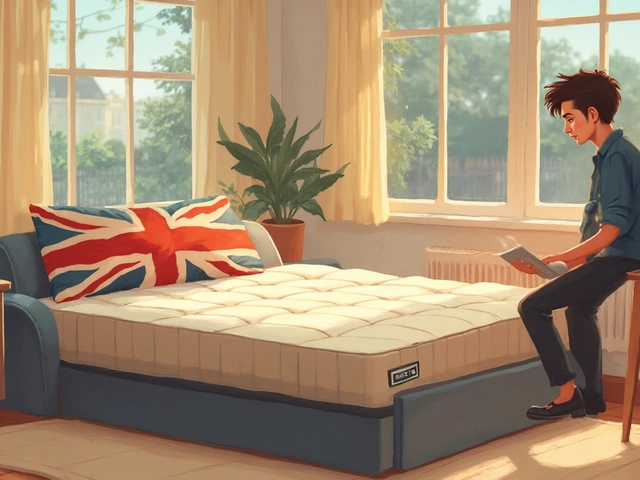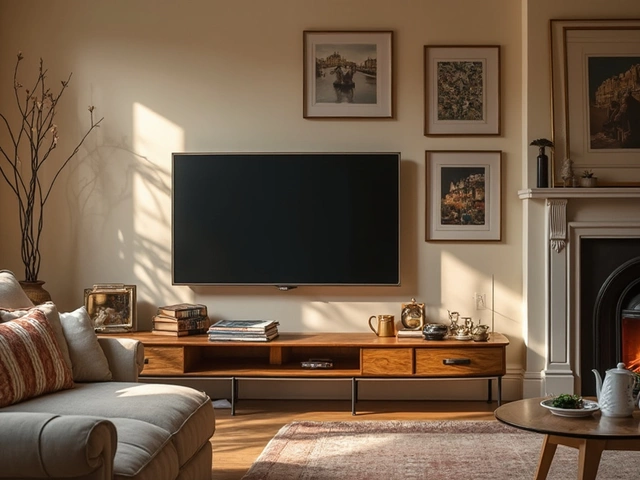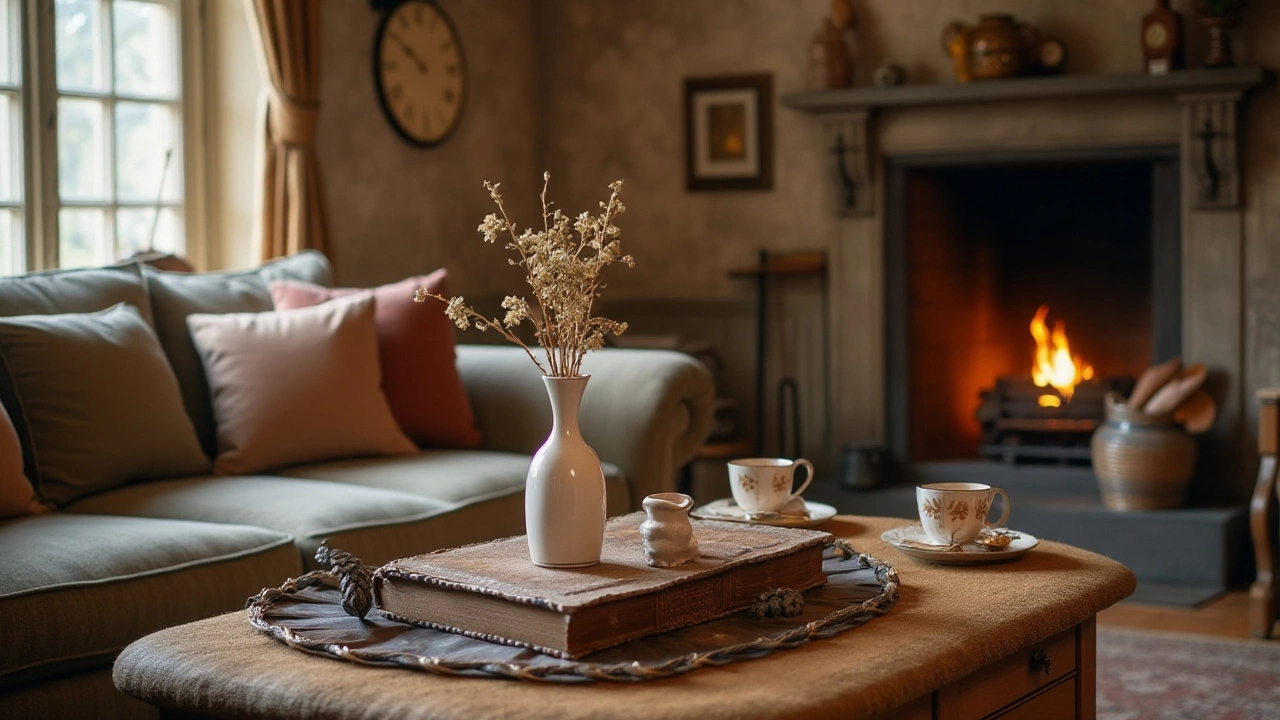 29
Oct,2024
29
Oct,2024
When arranging your living room, the distance between your coffee table and couch is more than just a matter of aesthetics. It plays a crucial role in your room's comfort and accessibility. While there isn't a strict rule for the exact measurement, many designers suggest a range of anywhere from 14 to 18 inches. This allows for enough space to move around comfortably while ensuring the table is within easy reach for those cozy nights in with a cup of tea or coffee.
Beyond functionality, considering how this furniture piece fits within your room's overall design scheme is just as important. You'll want it to complement your existing decor while serving its purpose as a central feature in your seating area. And let's not forget the practical side of things—this guide provides insights into sizing up your living room and personal needs to find that sweet spot where form meets function.
- Ideal Distance for Comfort
- Design and Style Considerations
- Practical Tips for Measurement
- Adapting for Different Room Sizes
Ideal Distance for Comfort
When it comes to interior design, strike a harmonious balance between comfort and aesthetics is crucial, especially in spaces where you spend substantial time, like the living room. The distance between your coffee table and couch is a key factor that can either enhance or hinder the usability of your space. While historically, rules have stipulated a standard range of about 14 to 18 inches, practical application can vary due to individual needs and room specifics.
To break it down, when your coffee table sits too close to your couch, it creates cramped quarters, making it difficult to maneuver around or stretch one's legs comfortably. Conversely, if it’s too far, reaching for a magazine or setting down a drink turns into an awkward stretch, which can be quite inconvenient during a relaxed evening at home.
"Interior design is a balance. It's as much about the usefulness as it is about the aesthetic appeal." — Kelly WearstlerWhen determining the best placement for your home, consider the traffic flow in the room. Busy households, especially those with children or pets, may require more room for frequent passage and play. Thus, adjusting the coffee table away within the specified range can cater to such dynamics, enhancing both the style and functionality of your living room without sacrificing comfort.
Modern trends have also seen a rise in multifunctional coffee tables that offer storage, which may influence the ideal spacing. These tables, while incredibly useful, might require a bit more breathing space to access different compartments without any obstruction from the couch. Measuring from the edge of your couch seat to the nearest point on your table is essential; this distance is usually synonymous with the length of an average footstep, making it intuitive and convenient.
If you're still undecided about your setup, try experimenting by moving the table closer or further in small increments. Observe how these changes affect your daily activities and interactions within the space. This hands-on method can yield insights into your lifestyle needs, making your living space not just beautiful, but truly functional.
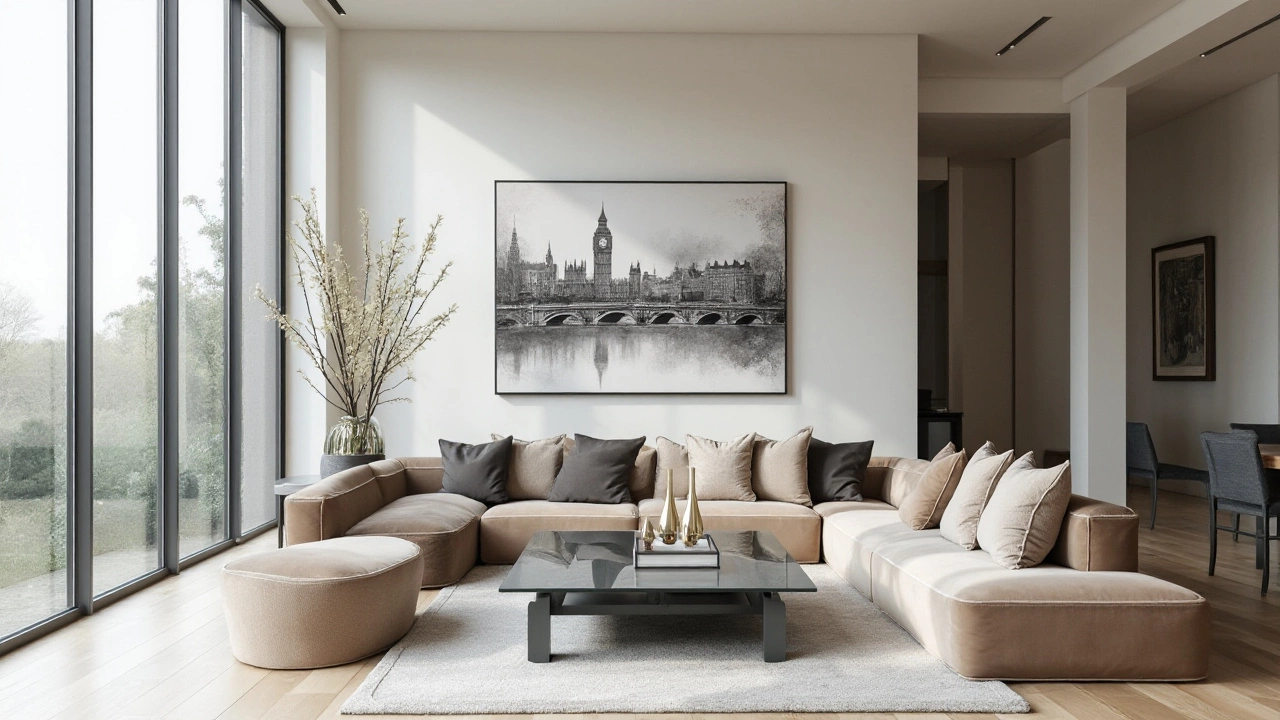
Design and Style Considerations
The relationship between your coffee table and couch goes beyond mere functionality; it's an art form that strikes a balance between style and purpose. When considering design, think about the table's materials. Wood often brings warmth and a classic feel, while glass lends an air of modern elegance. For industrial vibes, a mix of metal and wood might suit your tastes perfectly. The choice of materials can complement existing furniture and colors in your living room, acting as both a contrast and a cohesive force that ties your space together.
Color is another essential consideration. Your coffee table can echo the hues of other pieces in your room but it can also serve as an accent with a bold splash of color to draw attention. This choice depends heavily on your personal taste. Some designers suggest sticking to neutral colors if you want to make the room appear larger, while bold colors can add a playful or dramatic touch. Remember that the couch distance will impact your visual perception of the room. The closer the pieces are, the more unified the space may seem, which can be intentional in design.
If you're looking to incorporate a pattern into your space, the coffee table could be the perfect opportunity. While your couch may have a subtle or solid tone, a coffee table with a geometric or floral design can offer a layer of richness that catches the eye. It's wise to ensure that such patterns don't clash with the rest of your decor. An effective way is to pick one predominant pattern and let it be mirrored subtly around the room, allowing the pattern to be the star without overwhelming the senses.
"A well-chosen coffee table is not only a focal point but a reflection of the people and lifestyle it supports," says renowned furniture designer Jonathan Adler.
To add another layer of sophistication, consider the table's shape. Round tables are often seen as inviting and perfect for smaller spaces because they ease movement around them without the harsh angles of a square or rectangular table. On the contrary, square and rectangular tables can often mirror the lines of your couch and room itself, offering a sense of order and symmetry. Mixing a round table with a straight-lined couch can add a dynamic flair. While you make these decisions, keep in mind that personal style should always take precedence. After all, it’s about creating a space where you and your loved ones feel most at home.
The height of a coffee table deserves attention as well. Ideally, it should not be more than one or two inches lower than the height of the couch seat. This creates an aesthetically pleasing and practical flow between the couch and table. If your coffee table includes shelving or storage options, explore how this could influence your design theme or keep a tidy look. It's fascinating how these subtle details, like the distance from the couch, can significantly impact not just the room's functionality, but also its appeal.
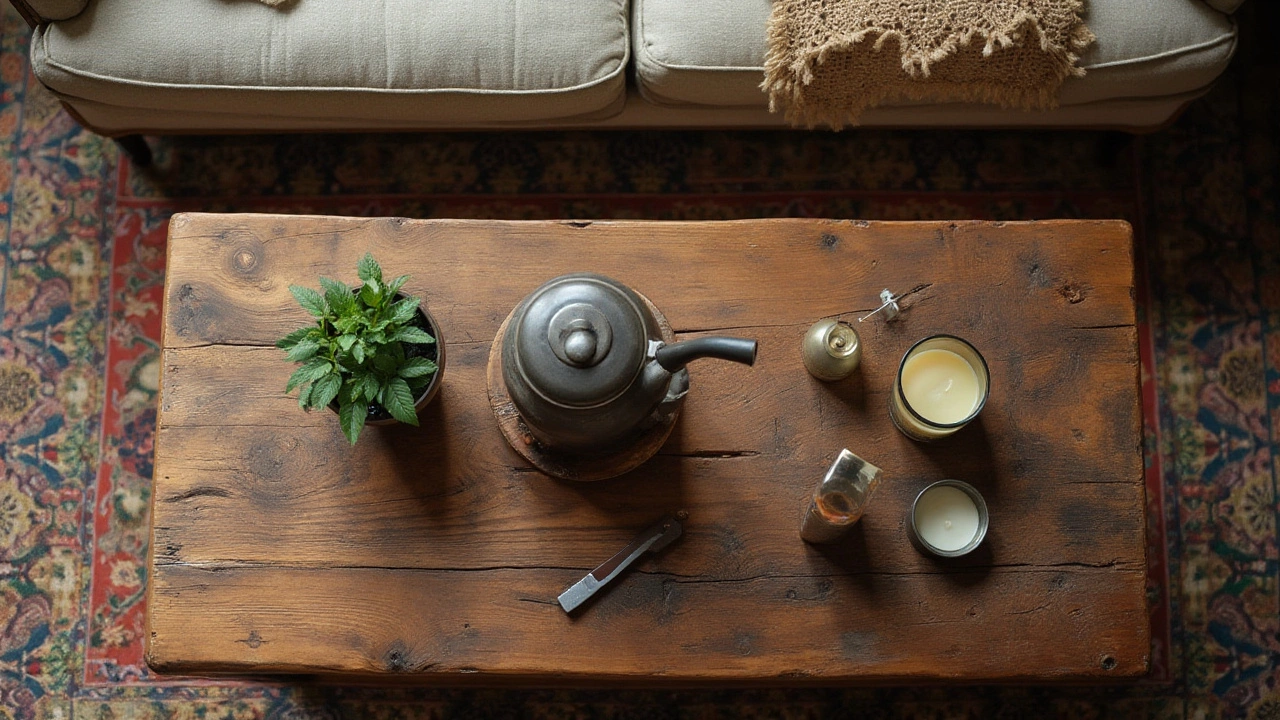
Practical Tips for Measurement
Setting the perfect distance between your coffee table and couch can greatly enhance the comfort and usability of your living room. A well-placed coffee table allows you to reach your favorite book without having to stretch awkwardly and makes it easy to set down a cup of coffee while catching up with friends. But how do you get it right? A generally accepted rule is to maintain a distance of about 16 to 18 inches. This gap gives you enough space to walk freely between the furniture, while still being close enough to grab what you need. Remember, the ideal space might vary depending on the depth of your couch and the size of your coffee table, so it's always worth customizing the distance to suit your specific pieces.
To ensure you've nailed the placement, here are a few practical tips. First, use masking tape on the floor to outline different placement options before committing. This can help you visualize the space and adjust as needed without heavy lifting. Don't overlook the relationship between the coffee table height and the seating. Ideally, the table should be around the same height as the couch cushions to ensure ease of use. In practice, this usually translates to a table height of about 18 to 20 inches. Again, this number can vary based on personal preference, but it's a useful starting point. Another handy tip is to check if your coffee table includes storage features. If it does, you might be able to justify a slightly closer placement, taking advantage of built-in functionality.
"The space between the couch and coffee table can transform a room from chaos to calm. This simple design element enhances not just aesthetics but also how you interact with your space," says renowned interior designer, Emily Henderson.
If you're still working out your exact measurements, consider how you use the living area. For instance, if your family enjoys board games, the setup might look different compared to a focus on television watching. Adapt your placement to your lifestyle. To top it off, take into account any additional furniture, like ottomans or side tables, as they can influence how far the coffee table should sit from the couch. If your living room is on the smaller side, aim for multi-functional pieces to make the best use of your space. But sometimes the classic measurements just don't fit. Don't be afraid to tweak them! Your comfort and the room's flow matter most.
Simple Calculation Method
Here's a straightforward way to figure out your perfect spacing: Measure the depth of your couch and halve it. Add about 18 inches to this number. This little formula provides a quick and easy guideline to help you establish the right distance for those engaging coffee table setups. Try it out, tweak as necessary, and you'll soon find your living space transformed into a cozy hub for relaxation and entertainment.

Adapting for Different Room Sizes
Fitting a coffee table into your living room is not a one-size-fits-all kind of task. The varying dimensions of living spaces—from cozy nooks to expansive open plans—demand different approaches to furniture arrangement. Smaller rooms may tempt one to snug everything up close, but a cramped layout can make the space feel even smaller. Opting for a more petite table and maintaining the suggested 14 to 18 inches from the couch can help create a sense of more room. Conversely, larger spaces have their own challenges, such as avoiding a layout that feels too sparse or disconnected. Here, a sizeable table might act as a pivotal piece, bridging the distance between seating elements and adding a sense of unity.
Yet, accommodating different room sizes isn't just about shuffling furniture around. It's about understanding how things like flow and accessibility—elements crucial to living room design—can be affected by your choices. For instance, in compact settings, embracing a multifunctional approach with a table that offers storage or adjustable heights can maximize utility while saving space. A more spacious living room might benefit from layering with multiple smaller tables that can be repositioned as needed, offering flexibility and adaptability to the room's layout. An often-quoted rule by Nate Berkus states the importance of 'not letting a piece of furniture become a roadblock.'
“Your home should tell the story of who you are, and be a collection of what you love.”This reinforces the idea that every design choice, including the placement and size of furniture, should reflect personal preference and lifestyle.
Adapting to different room sizes also means considering those unexpected spatial elements—doorways, windows, and the flow of foot traffic. It’s about visual balance and functional space, a concept that's been backed by interior design philosophies globally. Smarter furniture, such as those with wheels or nested options, can offer easy solutions for smaller areas or in homes where rooms might serve dual purposes. Beyond that, think about integrating natural light and coordinating decor themes that enhance rather than overcrowd the space. Keep in mind that the layout should accommodate daily activities comfortably, aligning with your personal needs while maintaining ease of movement throughout the room. Adjusting your furniture to suit your living room size not only enriches the aesthetic but also optimizes everyday usability.


